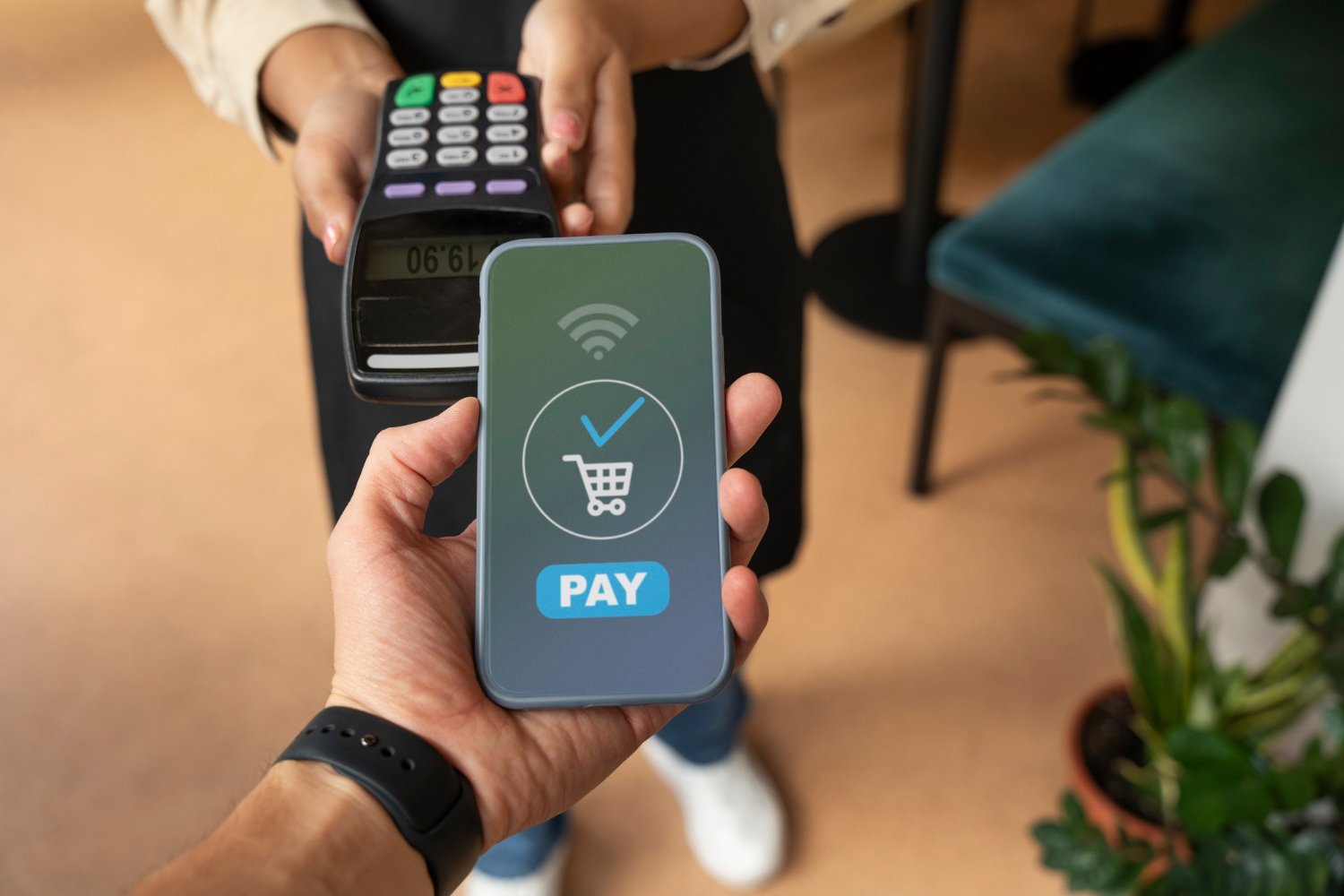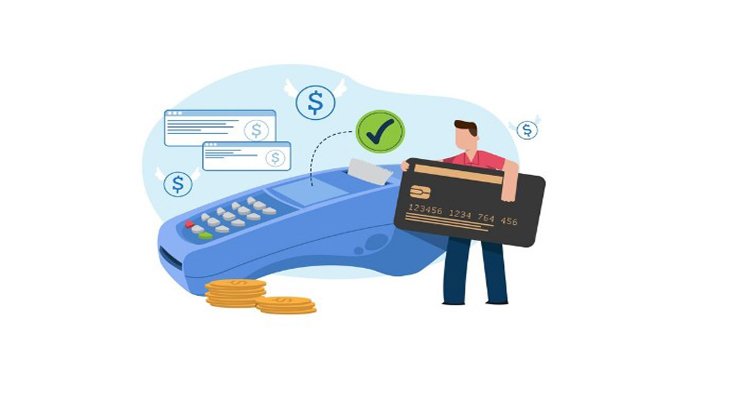
Streamline Your Shopify Checkout for Better Conversions
In the bustling realm of eCommerce, the journey from cart to completion is pivotal. Shopify’s One Page Checkout is designed to simplify this path, ensuring a swift and seamless experience.
This approach not only boosts conversion rates but also elevates customer satisfaction. Through exploring the nuances of single-page versus multi-page checkouts, this article offers practical tips for Shopify store owners aiming to refine their checkout process.
Key Takeaways
- Single-page checkout simplifies the purchasing process by reducing the number of steps required to complete a transaction, leading to higher conversion rates and lower cart abandonment.
- Optimizing the Shopify checkout involves balancing a seamless user experience with strategies that increase order value, necessitating continuous testing and refinement.
- Essential features of an effective single-page checkout include clarity, speed, security, and responsive design for both mobile and desktop shoppers.
- Strategic checkout optimization can be achieved through customization to fit brand identity, incorporating plugins for enhanced functionality, and streamlining user input.
- Implementing a one-page checkout on Shopify can be straightforward, and merchants can further customize their checkout experience with various Shopify apps and features.
Introduction to Single-Page Checkout
Explanation of single-page checkout and its emergence in eCommerce.
The shift to single-page checkout marks a significant evolution in online shopping, aiming to make purchases quicker and simpler. This approach, which turns the entire checkout into one easy step, is catching on as businesses strive to meet customers’ desires for speed and convenience.
Notably, platforms like Shopify have embraced this trend, even for their basic plans, reflecting a broader move towards making shopping online as seamless as possible.
Merchants are sharing stories of moving from clunky, multi-step checkouts to a streamlined single-page system, highlighting a shift towards prioritizing the customer’s time and experience in the eCommerce world.
Overview of how it simplifies the online transaction process.
The single-page checkout makes shopping online a breeze by putting everything on one simple page. This means customers can quickly pay with fewer clicks and no page hopping, making their shopping experience smoother and less stressful.
Here’s why it’s great:
- Quick Purchases: Fewer steps mean you can buy faster.
- Trustworthy: Everything you need to know, like costs and delivery times, is right there.
- More Sales: A hassle-free checkout means more people are likely to finish buying.
Adding options like Google Pay or Apple Pay makes things even easier, especially for shopping on the go. Plus, with biometric security, it’s not just quick, but also safe.
Single-Page vs. Multi-Page Checkout
Detailed comparison of single-page and multi-page checkouts.
When choosing between single-page and multi-page checkouts, think about the shopper’s journey from adding items to their cart to making the purchase. Single-page checkouts, like Amazon’s efficient setup, put everything on one screen for a quick buy. On the other hand, multi-page checkouts guide customers through steps like shipping and payment, making the process feel less daunting by breaking it up.
Here’s a quick comparison:
- Single-Page Checkout: Quick, all-in-one view, likely boosting sales.
- Multi-Page Checkout: Step-by-step guidance, less overwhelming, with a thorough final review.
Choosing the right style depends on your customers and what you’re selling. Testing both methods can help you see which one your shoppers prefer.
Pros and cons of each, based on speed, user experience, and conversion rates.
When thinking about the checkout experience, how quickly and easily a customer can complete their purchase is key to keeping them happy and boosting sales.
Single-page checkouts offer a speedy solution by cutting down the clicks to purchase, especially handy on mobile where every second counts. Yet, multi-page checkouts have their place too, providing a clear, step-by-step journey that can make checking details and adding extras easier.
Why Go for a Single-Page Checkout?
- It’s fast, reducing the time to buy.
- Less chance of customers giving up on their purchase.
- Creates a smoother shopping experience.
But, Keep in Mind…
- It can get cluttered if not designed well.
- Might not have room for all the product details shoppers need.
The Upside of Multi-Page Checkouts:
- Guides customers clearly through each buying stage.
- Great for suggesting additional purchases.
The Downsides:
- Could lead to more customers dropping off before buying.
- Might lag on mobile, testing the patience of shoppers.
Conversion rates are crucial for online stores, and single-page checkouts often win by making shopping quick and easy. Yet, what works best—single-page or multi-page—really depends on what you’re selling and who you’re selling to. A thoughtful approach to the design and flow of the checkout process, tailored to your customers’ needs, can make all the difference.

Essential Features of an Effective Single-Page Checkout
Key elements that constitute an effective single-page checkout (e.g., clarity, speed, security).
Creating a seamless single-page checkout is at the heart of a great online shopping journey. It’s all about making things crystal clear for the customer, so they glide through the process without hitting any snags. This means upfront pricing, straightforward shipping details, and easy-to-navigate payment options are a must.
Speed is of the essence, too. A quick and smooth checkout can make the difference between a sale and an abandoned cart. And let’s not forget trust – showcasing security badges and trust seals helps reassure customers that their information is safe and sound.
So, what should businesses focus on to keep their customers clicking ‘complete purchase’?
- Keep forms simple to reduce hassle.
- Offer a guest checkout to welcome every shopper.
- Provide instant updates on shipping costs and when items will arrive.
- Make security a visible priority to build confidence.
By honing in on these areas, companies can craft a checkout experience that not only keeps customers around but also nudges them over the finish line, boosting those all-important conversion rates.
Importance of responsive design for mobile and desktop.
In the digital shopping age, having a website that adapts seamlessly to any device is critical, especially with millions shopping on mobile. The key is a single-page checkout that effortlessly adjusts to different screen sizes, ensuring a smooth experience for all users.
Designers focus on simplifying the process, emphasizing readability and easy navigation, even on the smallest screens. By optimizing touch interactions and decluttering the interface, they aim to make online shopping enjoyable and straightforward, catering to the needs of the modern shopper.
The Dual Benefits of Single-Page Checkouts
Enhancing Customer Shopping Experience
A significant hurdle in online shopping is cart abandonment, where customers add items to their cart but leave the site without completing the purchase. Complex or lengthy checkout processes are a common cause of this issue.
Single-page checkouts address this problem by consolidating the entire process into one page. This simplicity means fewer steps for the customer, a clearer overview of their purchase, and a quicker path to completion.
Impact on Customer Satisfaction and Return Rate
Enhanced user experience through single-page checkouts directly impacts customer satisfaction. A smooth, fast, and uncomplicated checkout process leaves a positive impression, encouraging customers to complete their purchases.
Satisfied customers are more likely to return for future purchases and recommend the site to others, thus increasing customer loyalty and the likelihood of repeat business.
Boosting Business Efficiency and Sales
By eliminating unnecessary steps and simplifying the checkout process, businesses can see a notable increase in conversion rates. A streamlined checkout minimizes the chances of customers abandoning their carts due to frustration or confusion, directly contributing to higher sales.
The efficiency of a single-page checkout not only enhances the customer’s experience but also optimizes the sales funnel by reducing the drop-off points where potential sales might be lost.
Case Studies and Data Showcasing Sales Improvement
Multiple case studies and data analyses have highlighted the positive impact of single-page checkouts on sales. For instance, businesses that have transitioned to a single-page checkout often report an increase in conversion rates by a significant margin.
Some studies have found that simplifying the checkout process can lead to an increase in conversions by up to 20% or more. These improvements are attributed to the reduced time and effort required to complete a purchase, making customers more likely to follow through with their buying intentions.
Case studies from various online stores, such as Carnivore Club and Battlbox, demonstrate the effectiveness of a well-optimized checkout process. For instance, after implementing a single-page checkout, these businesses reported:
| Business | Conversion Rate Increase |
|---|---|
| Carnivore Club | 20% |
| Battlbox | 25% |

Strategic Optimization of Single-Page Checkouts
Customization: Tailoring the Checkout to Fit Your Brand
Visual Consistency
Ensure the checkout page design aligns with your brand’s visual identity, including logos, color schemes, and typography. This consistency reinforces brand recognition and trust.
Brand Voice
Use your brand’s voice in the checkout process for instructions, descriptions, and thank-you messages. A unique tone can enhance the customer’s connection to your brand.
Custom Fields
Add custom fields or messages that are relevant to your brand, such as gift wrapping options for luxury items or a sustainability pledge for eco-friendly brands.
Examples of Successful Brand-Specific Checkout Pages
- Luxury Brands: High-end retailers often include options for gift messages, premium packaging, and a sleek, minimalist design that reflects the exclusivity of the brand.
- Eco-Friendly Stores: These may feature carbon offset options at checkout, information on recyclable packaging, and imagery that highlights the brand’s commitment to sustainability.
Extension through Plugins: Enriching Functionality for a Better Checkout Experience
Overview of Plugins and Third-Party Tools
Plugins and third-party tools can significantly enhance the checkout experience by adding functionality that Shopify’s base offerings might not cover. These can include payment options, security features, and customized shipping methods.
Recommendations for Must-Have Plugins for Shopify Stores
- One-Click Upsell: Offers customers last-minute additions or upgrades to their purchase after the initial payment, enhancing average order value.
- Address Autocomplete: Integrates with services like Google Places to autofill address fields, reducing input errors and speeding up the checkout process.
- Security Badges Plugin: Adds trust badges to your checkout, reassuring customers that their payment information is secure.
Streamlining User Input: Making Data Entry Effortless
Reducing the amount of information customers need to input can significantly speed up the checkout process and reduce abandonment rates.
Strategies to Reduce Customer Input
- Autocomplete Fields: Implement autocomplete for address fields to minimize typing and reduce errors.
- Saved Information: Allow returning customers to save their information for faster checkouts in the future.
- Guest Checkout Options: Enable customers to make purchases without creating an account, removing a potential barrier to completing the sale.
Real-Time Updates: Keeping Customers Informed During Checkout
The inclusion of real-time updates for pricing, shipping, and delivery times can significantly enhance the customer’s checkout experience.
The Role of Dynamic Updates
- Transparency: Providing customers with real-time calculations of costs, including taxes and shipping, builds trust and helps avoid surprises at the final step.
- Delivery Options: Offer various shipping options with updated delivery times, allowing customers to choose based on their urgency and budget.
How to Implement These Features
- Dynamic Pricing Plugins: Utilize plugins that can calculate and update costs in real time based on customer location, selected options, and current promotions.
- API Integrations: Integrate with shipping and delivery service APIs to provide accurate, real-time shipping options and delivery times.

Implementing Single-Page Checkout on Shopify: A Step-by-Step Guide
Detailed guide on setting up a single-page checkout in a Shopify store.
Setting up a single-page checkout on your Shopify store can be a game-changer for your eCommerce business. The process is straightforward and does not require a Shopify Plus account, contrary to popular belief.
With the recent updates from Shopify, even merchants on the Basic plan can now enjoy the benefits of a simplified checkout experience.
To begin, navigate to your Shopify admin panel and follow these steps:
- Go to ‘Settings’ > ‘Checkout’.
- Locate the ‘Checkout style’ section and select the ‘Single-page checkout’ option.
- Customize the checkout page by adding your brand logo and choosing a color scheme that aligns with your brand identity.
- Configure your payment options and ensure that all payment gateways are properly integrated.
- Review the settings for shipping and taxes to ensure accuracy and compliance.
- Test the checkout process thoroughly to confirm that everything is functioning as expected.
Remember, the key to a successful single-page checkout is to keep it simple, intuitive, and aligned with your brand. By reducing the number of steps and streamlining the process, you can significantly decrease cart abandonment and improve conversion rates.
Customization options available within Shopify and through apps
Shopify’s platform enriches the checkout experience with extensive customization capabilities, allowing merchants to infuse their brand identity and cater to customer preferences seamlessly.
From integrating loyalty rewards and upselling opportunities to embedding custom content and interactive elements, Shopify transforms the checkout journey into a more engaging and personalized process.
Exclusive features for Shopify Plus users and a wide array of apps, such as Oberlo for dropshipping and Growave for loyalty programs, provide additional layers of customization.
This ecosystem ensures every checkout can reflect the unique essence of a brand, making every purchase a memorable part of the customer’s shopping experience.
Conclusion
In the ever-evolving world of eCommerce, a smooth checkout process is key to a store’s success. Shopify’s one-page checkout simplifies the path to purchase, cutting down on cart abandonment and boosting customer happiness.
This streamlined approach has been shown to bump up conversion rates by 8% for those using Shop Pay. The magic lies in fine-tuning this process, blending simplicity with smart upselling to lift average order values.
Whether leveraging Shopify’s own tools or adding apps and tweaks, crafting a checkout that’s easy to use and true to your brand is crucial. This guide has shown that a well-optimized single-page checkout doesn’t just make shoppers happier—it also drives better business results.
Armed with these insights, you’re ready to take your Shopify store’s checkout experience to the next level.
Frequently Asked Questions
What is single-page checkout and why is it important for Shopify stores?
Single-page checkout is a streamlined process that allows customers to complete their purchases on one page without navigating through multiple steps. It’s important for Shopify stores as it can reduce cart abandonment and improve conversion rates by making the checkout experience faster and more user-friendly.
How does single-page checkout differ from multi-page checkout?
Single-page checkout condenses the entire transaction process into one page, whereas multi-page checkout requires customers to progress through several pages for shipping, billing, and payment information. Single-page checkouts are generally quicker and can lead to better conversion rates.
What are some key features of an effective single-page checkout?
An effective single-page checkout should be clear, fast, and secure, with responsive design for mobile and desktop. It should also minimize the need for data entry, provide real-time updates, and offer guest checkout options to streamline the purchasing process.
How can single-page checkouts enhance customer satisfaction?
Single-page checkouts reduce friction and potential frustration by providing a seamless and quick purchasing experience. This can lead to increased customer satisfaction, higher return rates, and a more positive perception of the brand.
Can single-page checkouts actually increase a business’s conversion rates?
Yes, single-page checkouts can increase conversion rates by simplifying the purchasing process and reducing the time and effort required to complete a transaction. Businesses often see a noticeable improvement in sales and reduced cart abandonment when implementing single-page checkouts.
How do I implement a single-page checkout on my Shopify store?
To implement a single-page checkout on Shopify, you can use the platform’s built-in customization options or integrate third-party apps. You may need to adjust settings in your Shopify admin and consider customizing the checkout to fit your brand’s style and requirements.

Muhammad Moiz, a Dartmouth College Computer Science major, is an experienced and respected figure in the fields of digital marketing and programming. Moiz excels in demystifying complex technical topics, making him a valuable resource for both seasoned professionals and those new to the tech world.

